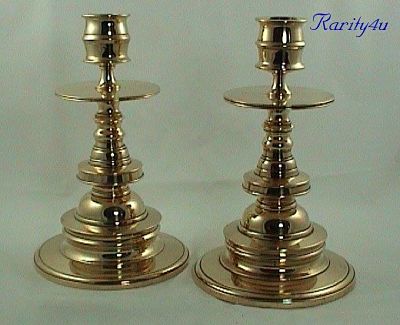 Gusums Bruk is a Swedish company with a long and problematic history. Nowadays Gusum Work’s traditions are living thanks to “Nordic Brass Gusum AB”, which continues to produce brass.
Gusums Bruk is a Swedish company with a long and problematic history. Nowadays Gusum Work’s traditions are living thanks to “Nordic Brass Gusum AB”, which continues to produce brass.Timeline 1653-1988
1653
The two Walloons Henry (Swe: Henrik) de Try and his brother-in-law Hubert de Besche buy the Gusum farm from Lieutenant Sven Thorsson and found an ironworks with a blast furnace to cast cannons. Of the 16 people employed at the factory 4 are Walloons. The site for the production is well-chosen because of the proximity to water and forest. It being situated only 10 km from the loading centre in Valdemarsvik makes it very convenient as far as trading is concerned. The first works are erected by a small river Gusum at a place called “Masugnskärret”.
1655
The Trys found Överum and Ankarsrum Works.
1661
Henrik de Try starts a brass foundry with a blast furnace and a wire-making bench, wire constituting the greater part of the production. Occasionally objects of brass forging are manufactured e.g. a christening font given as a gift to the church in Ringarum in 1663.
1666
The iron works is closed down.
1669
Henrik de Try dies at the age of 69 and his widow Catharina de Try takes over the works. She moves to the manor of Wittvik situated 15 km to the south-east of Gusum. She dies in 1679 and there begins a hard time of severe pecuniary difficulties and complicated relations between the part-owners who are quite a few: Hans Clerk, Hindrich Steinhausen, Abraham Cronström, Abel Reenstierna.
1707
The Gusum Works takes up a new branch of manufacture; (press)buttons, hooks, buckles and similar.
1710
Georg Spalding, who happens to be related to Hindrich Steinhausen, joins in as a part-owner. Severe winters and dry summers result in a bad supply of water, which almost destroys the works.
1713
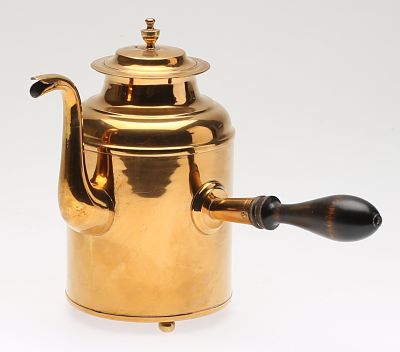 Magnus Westerberg, who is married to Spalding´s sister Maria, becomes a part-owner. There begins another period of hard times for the works. The King Karl 12 is at war and copper is in great demand. It is bought at Falun, Avesta, Bersbo and Garpenberg, zink is imported from Britain, Hungary, Poland and Holland.
Magnus Westerberg, who is married to Spalding´s sister Maria, becomes a part-owner. There begins another period of hard times for the works. The King Karl 12 is at war and copper is in great demand. It is bought at Falun, Avesta, Bersbo and Garpenberg, zink is imported from Britain, Hungary, Poland and Holland.1721
Georg Spalding dies.
1723
Magnus Westerberg dies. Their children are too small and the two widows take over the management of the works.
1731
They move to a stately manor built for them and their children (the manor was tragically lost in a fire in January 1995). The same year a church in Gusum is consecrated. In 1668 the Trys got permission to construct a chapel and have a priest. The old chapel soon gets dilapidated and is replaced by the church, which is built, to a great extent, on the money donated by the widows.
1742
A pin factory is set up employing about 200 workers. Slow but sure it becomes the leading manufacture at the works and remains as such up to the end of the 1800´s. There reigns discord and enmity between the two families of owners.
1752
The Westerbergs family starts a knife factory, at which, in the year of 1760, about 150 models of knives and forks are manufactured, such as table-, pocket, penknives and razor blades.
1767
The knife factory is closed down.
1810
A new factory producing iron and brass nets opens.
1812
The Westerbergs family becomes the sole owner of the works.
1821
Gusum opens a new production –making bar iron – at Ursäter, situated down the little river Gusum.
1875
The Gusum Works are transformed to “The Gusum Works and Factories AB”.
1881
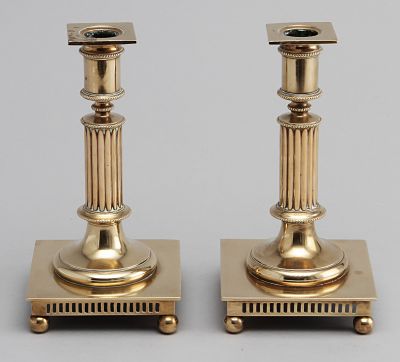 Another metal manufacture and high-class casting begins, producing impressive armatures for lamps: church chandeliers, candelabra, candlesticks etc.
Another metal manufacture and high-class casting begins, producing impressive armatures for lamps: church chandeliers, candelabra, candlesticks etc.1888
The iron mill at Ursäter is closed down.
1892
There opens a new production of forming fabrics, the first customer being “Stjärns Bruk” in Dalarna.
1905
Two power-stations at Mellanbruket and Ursäter are constructed, producing over 200 horsepower of electricity to set in motion workshops, a saw-mill, a mill and a thresher.
1925
The manufacture of chandeliers, candelabra and candlesticks is closed down.
1931
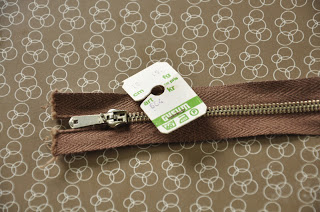 In early summer The Gusum Works starts the first and largest zip- fasteners factory in Sweden. The production is founded on the patent and construction developed by Gideon Sundbäck, the majority of the machines being constructed by Dr. Martin Winterhalter from Switzerland. In those days the manufacture of zip-fasteners was rapidly developing in Germany and a number of Germans came to help start a new production.
In early summer The Gusum Works starts the first and largest zip- fasteners factory in Sweden. The production is founded on the patent and construction developed by Gideon Sundbäck, the majority of the machines being constructed by Dr. Martin Winterhalter from Switzerland. In those days the manufacture of zip-fasteners was rapidly developing in Germany and a number of Germans came to help start a new production.1944
The population of Gusum community expands with the coming of about 100 young women from the north of Sweden in their 20´s, who become recruited for the new production.
1945
In the middle of the 1940´s the local engineer Einar Bjärlind and master John Mattsson construct a new zip-making machine, so called “radautomater”, which brings about a considerable improvement and increase in the manufacturing process.
1949
The manufacture of buttons, hooks, buckles and similar is closed down to open the production of brass strings and bars, and later – pipes.
1950
The Gusum Works expand their manufacture of zip-fasteners to Finland. The factory “OY Kiitoktjo” is situated in Malm not far away from Helsinki. A few years later in Denmark, in a place called Lyngby near Copenhagen, opens a new zip-manufacturing factory “Gusum Lynlaas”.
1953
Gusum expands its production of zip-fasteners to Holland and England (GB Fasteners). The Gusum factory employs about 275 people. In Norrköping The Gusum Works had a zip-manufacturing factory with 150-200 workers.
1955
The production in Gusum goes up to about 20 km. per day. The yearly production amounts to about 5 000 km.
1958
At the end of the 1950´s there starts the production of plastic zip-fasteners though without much enthusiasm. Outside Sweden plastic zips have been manufactured since the beginning of the 1940´s but in Gusum they tried to preserve the old quality up to the beginning of the 1960´s.
1960
The Gusum Works buy and install new Nägele machines, which can perform a few operations thus making the production more effective.
1965
The production level in Gusum reaches 30 km. per day.
1966
The pipe production moves to Gräsdalen 1 km to the north-west of Gusum.
1968
The smelting plant is moved to Gräsdalen.
1974
A new stamping mill opens at Gräsdalen.
1975
The factory in Gusum starts the manufacture of a new zip-model with plastic toothed edges and the same kind of the sliding tab as in the “Gusum tie”.
1981
“Gusums Skogar AB” (forest) is sold.
1983
The Gusum Works buys “NordmetallAS” I Denmark and sells the production of forming fabrics to “ScandiafeltAB”.
1985
The bar production moves to Gräsdalen.
1985
Though sold the zip production is preserved by a new company up to 1994, when the last zip was manufactured in Gusum.
1986
The zip-fasteners manufacture is sold, “Gusums BrukAB” is restructured and becomes the leading company for “Gusum MetallAB”, “NordmetallAS” and “Gusum Trading AB”.
1987
On the 1st of April “Gusums MetallAB” and “NordmetallAS” are sold to “Boliden Bergsöe AB”.
1988
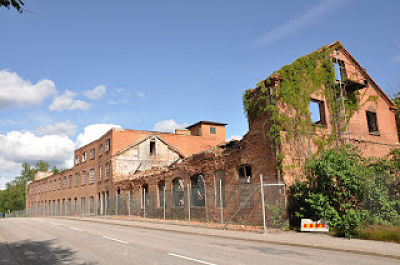 On the 15th of April “Gusums Bruk AB” goes bankrupt. Under the new management the manufacture of zip-fasteners went on up to 1992, when it was closed down. The production of forming fabrics was preserved at a different foundry up to the spring of 2010.
On the 15th of April “Gusums Bruk AB” goes bankrupt. Under the new management the manufacture of zip-fasteners went on up to 1992, when it was closed down. The production of forming fabrics was preserved at a different foundry up to the spring of 2010.Nowadays Gusum Work’s traditions are living thanks to “Nordic Brass GusumAB”, which continues to produce brass.
